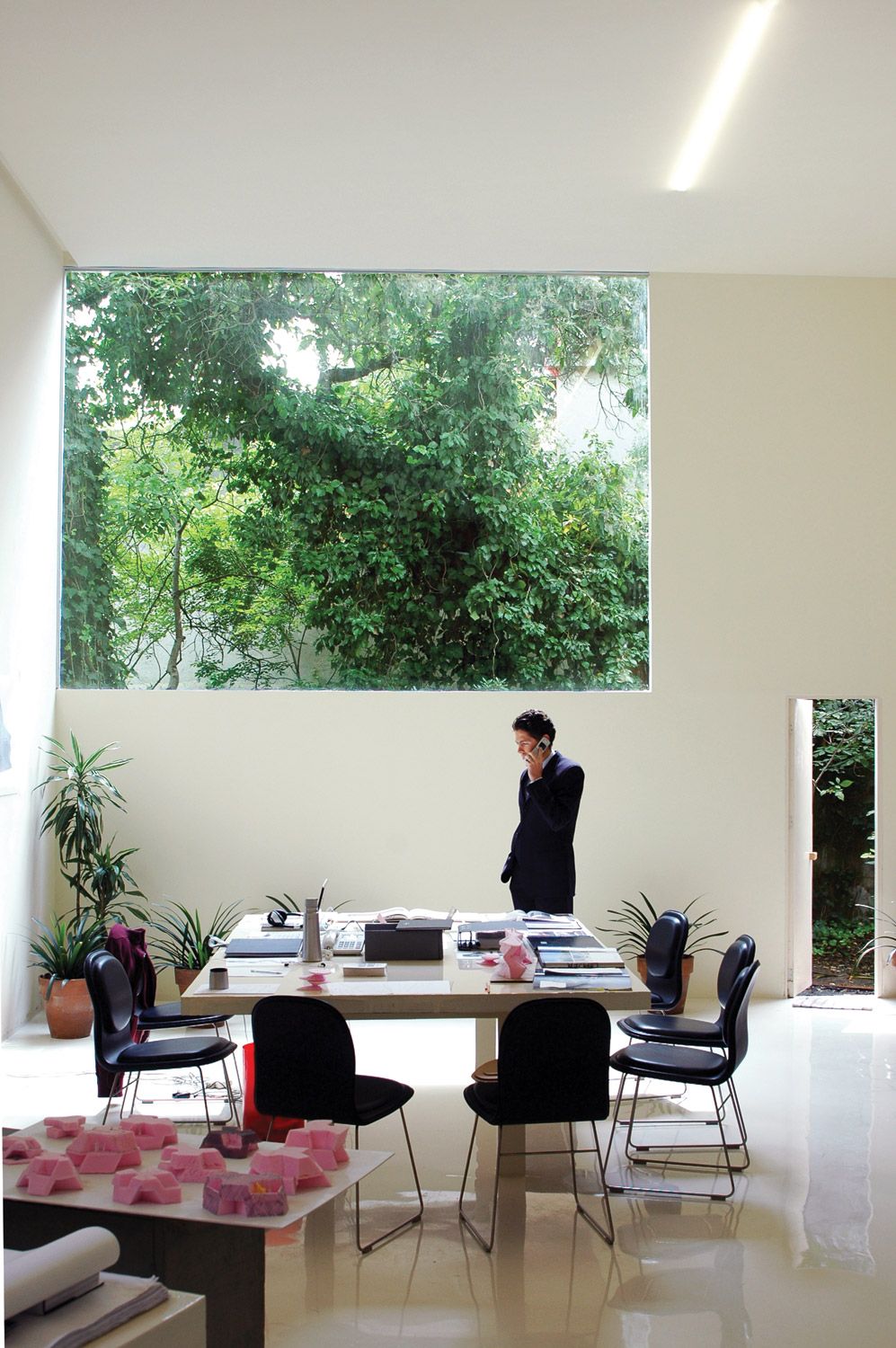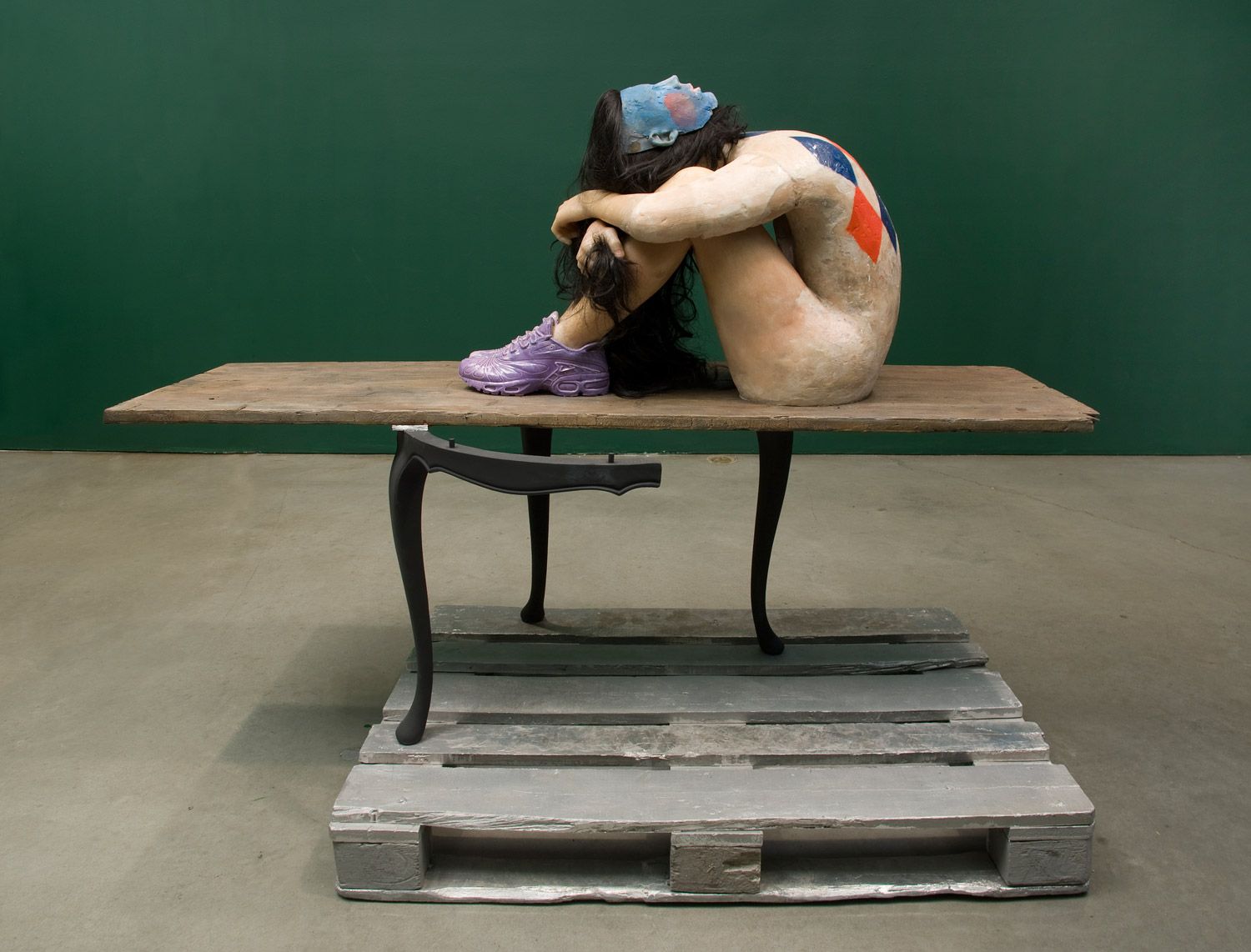GUY CRAMER: Disappear Us Algorithms, Aesthetics, and the Armed Forces
|CONROY NACHTIGALL
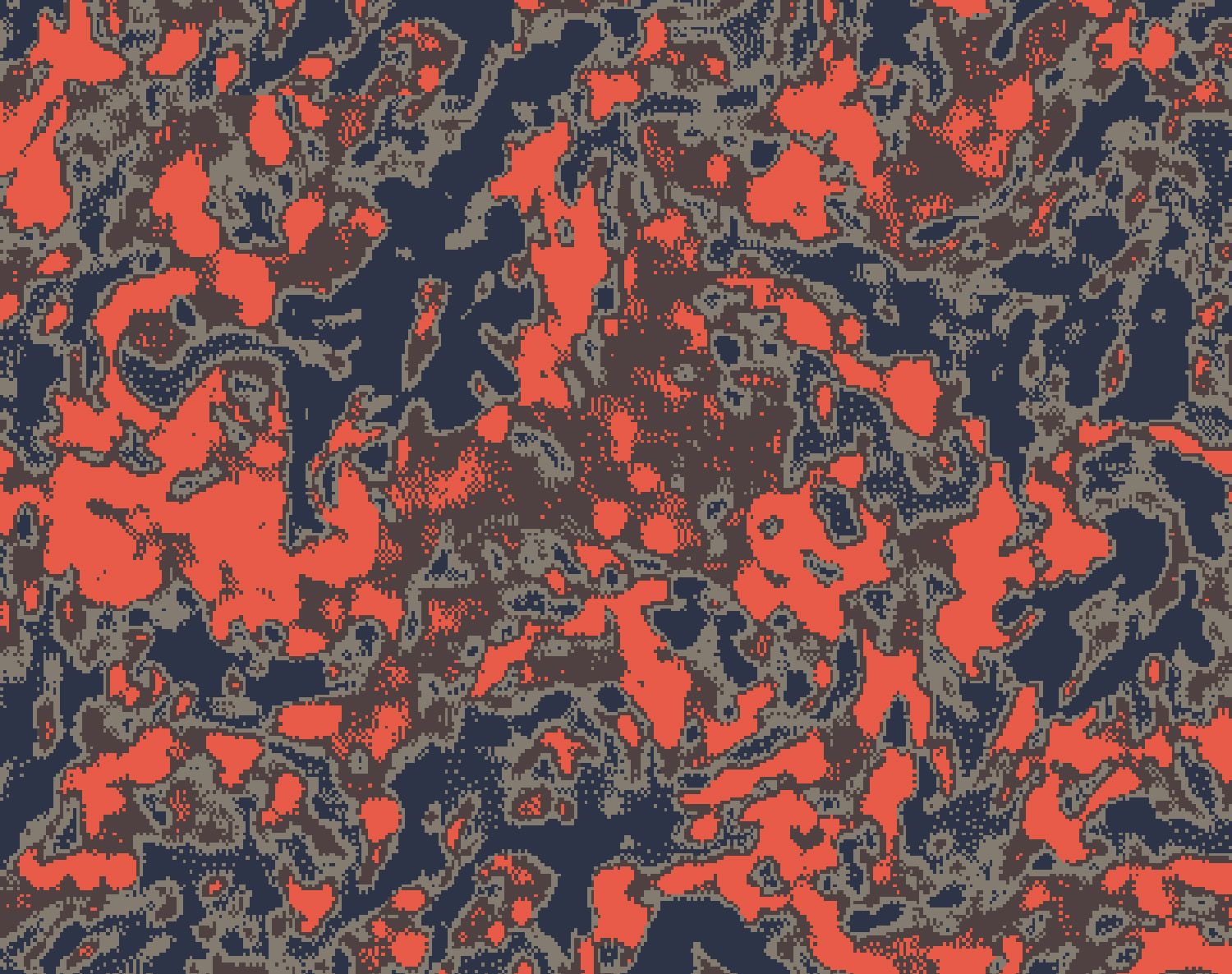
Amidst the complicated and abundant cultural and political significances that “camo” has acquired over the past half century, we often forget that on the front lines of modern warfare, camouflage is a matter of life and death, just as in Darwin’s theory of natural selection. No matter where you stand on its confounding form and controversial function, camouflage is a powerful assimilative tool: it is a polyvalent social marker, as much in the street as on the catwalk, as seen most recently in the Men’s Spring/Summer 2013 collections by Valentino, Dries Van Noten, and Pringle of Scotland. In the field, it can completely absorb you, incognito, into an environment.
That, at least, is the goal, one that would appear to have been largely taken for granted within the historically design and intuition-based creation of army fatigues. How could such an increasingly fundamental aspect of the military’s look and strategy since World War I have been ignored by research in society and technology for so many decades? Enter GUY CRAMER, the Canadian paintball champion who decided that the camouflage pattern his tax dollars were paying for wasn’t going to cut it. His first experimental forays into digital pattern design in the early 2000s caught the attention of King Abdullah II of Jordan, among others. Now President and CEO of HyperStealth Biotechnology Corp., Cramer is still pioneering military camouflage based on mathematical fractals, a practice that has taken the uniform to the deepest realms of science. Here he offers a glimpse into what is, without a doubt, the only industry in which clothing is dictated by geopolitical, environmental, and neurological factors – where algorithms meet aesthetics meet the Armed Forces.
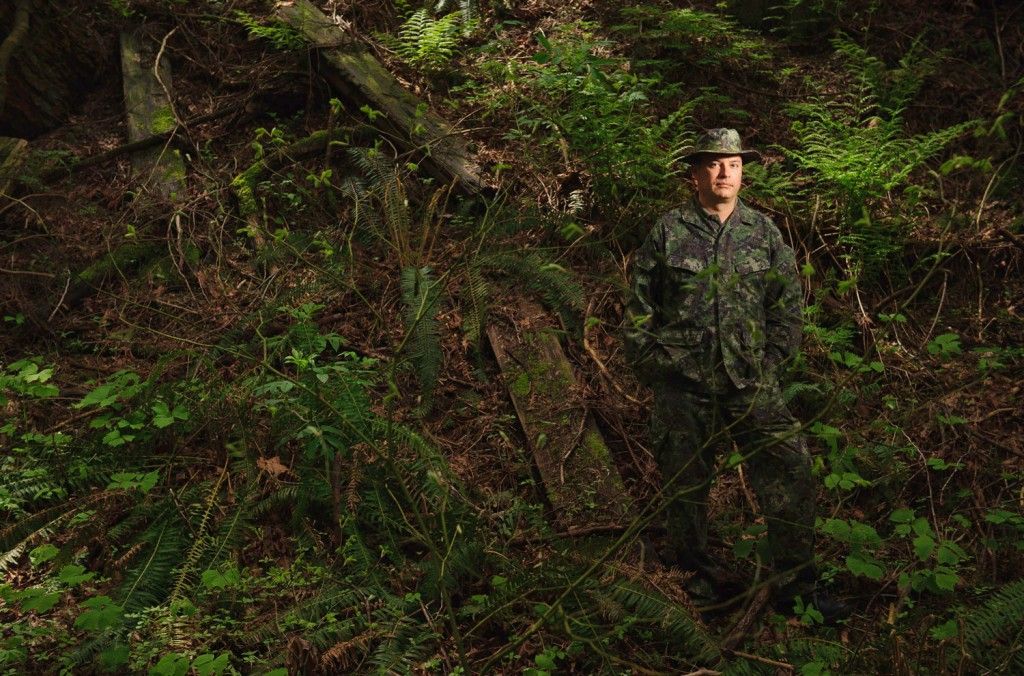
CONROY NACHTIGALL: Historically, creating camouflage was seen more as an art. Artists were hired to come up with the design and the patterns looked expressionistic. When the first digital camouflage, CADPAT (Canadian Disruptive Pattern), came out in the 90s, it cut through that. It wasn’t based on an interpretation of what would blend in, but on a scientific approach based on what the eye sees. It didn’t look like it would work, but that didn’t matter because it used the science of visual disruption and not the art form. You saw beyond that. What prompted you to get into camouflage design?
GUY CRAMER: I played paintball, and those paintballs hurt when they hit. Everyone was using the older U.S. Army camouflage. I could tell right away, those guys were standing out. I started to research camouflage and found that the British DPM (Disruptive Pattern Material) was more effective than the camouflage used by the U.S. Army, so I started to wear DPM. All the other guys were getting spotted before me. It got me thinking, “Why is this working, and can it be done better?” I started to understand there was more to it than just the design it was also about tactics. I was critical of the CADPAT camouflage, because it cost millions and took years to develop. I looked at it and thought, “It looks like a kid with graph paper did this.” I improved on what they had done in a couple of hours with a $100 graphics program and posted it on the web. I called it GUYPAT. A few months later the King of Jordan saw this page and basically asked if I could do this for him.
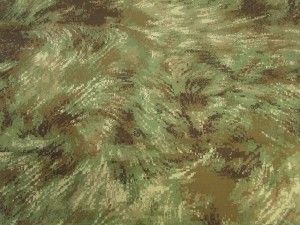
I let them know this wasn’t my profession, but that didn’t matter to the King, he liked what I had done. So I looked into the history of camouflage: Why did Canada go digital? Well, they’d gone digital because a gentleman named Lt. Col. Timothy O’Neill – who is now my partner in camouflage design – had come up with the concept for the U.S. Army in the late 70s/early 80s. The U.S. Army did tests proving it to be somewhat effective, yet it never went anywhere. Maybe because it was too artificial looking. The Canadians picked up on it and ran with it. It was only when NATO tested CADPAT and it started beating DPM that everyone took notice. That’s when the U.S. Marine Corps approached the Canadians and basically said, “We want the pattern.” The Canadians said they could have it, as long as they recolored it. That’s how MARPAT (Marine Pattern) came about.
Then everyone around the world started to look at digital camouflage. If the Canadians and the Americans had done it, there must be something to it. The trials were showing that a Canadian soldier could get 30 percent closer with a digital pattern than he could with his olivedrab uniform.
Part of what makes CADPAT/MARPAT less effective is isoluminance – when colors blend into one another at a tactical distance. If you are a U.S. Marine and you’re at 40 yards, that’s a great pattern to have, at 70 yards the colors isoluminate into one perceived color. If you’re a Navy Seal and you’re two feet away from someone, it’s not a great pattern because it looks so artificial. When we’re designing for regular Army we’re designing for different combat ranges than for Special Forces. There is a very subjective component factored into the close range camouflage. We are trying to blend the science into the art but not the art into the science.
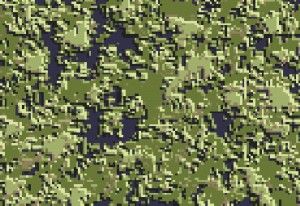
Can you talk a bit about the about the scientific aspect? What prompted the use of algorithms in the first place?
The American military had said, the next step in developing a new and better pattern is to incorporate fractals. A fractal, being a naturally repeating geometric shape, is catalogued and ignored by the brain. If we were to analyze the bushes and trees every time we walked outside we’d be overwhelmed with data. So our subconscious says, “That’s a tree, that’s a bush; that’s this kind of bush, that’s that kind of bush – ignore”. By incorporating those patterns into a camouflage your brain is looking at it and saying – “Ignore.” What you’re trying to do is stop the brain from analyzing an anomaly by making it think that the anomaly actually belongs in the background.
That’s the first thing when designing a pattern – to get the eye to scan right over it. But the brain won’t be tricked forever, it starts to zero in on something else, maybe an arm sticking out. We use different algorithms once the brain starts analyzing the target itself, to conceal that arm properly.
You move the reference points.
Yeah, the joint points, basically. By incorporating that algorithm into a camouflage you’re able to hide the target’s shape better. We use symmetry disruption so the left side doesn’t look the same as the right side. Everything we’re doing in camouflage has a purpose. Prior to us it was solely a matter of intuition.

Camouflage patterns also have different functions. For the Special Forces concealment is paramount, but for the general Army camouflage has periphery purposes – it has to convey a cohesive look and needs to be something a soldier can identify with, it becomes a rallying tool. Is there an aesthetic or subjective element involved as well?
We get everything from – “It looks great, it looks wonderful, it looks effective” – to “Yuck, I hate it.” In the past there was a kneejerk opposition to the digital patterns. There’s objective data that says it does work better, but there’s also subjective data that says the guys would rather be wearing something else. There are a whole bunch of subjective components to it – aesthetics are definitely a massive part of the decision for the General that signs off on it. We’ve designed some ugly camouflage that was very effective that never went anywhere because it was so ugly. We learned you always have to have that aesthetic appeal in order to win the contract.
What do you do when one of your patterns loses a competition to a pattern you know to be less effective?
It’s unfortunate because the last thing I want is a soldier using something that’s ineffective. When a soldier gets tricked into believing one thing because of the marketing versus what really happens out there, that’s when I get upset. When the military comes out with a pattern that is all about aesthetics and not about effectiveness, that’s when I get upset.
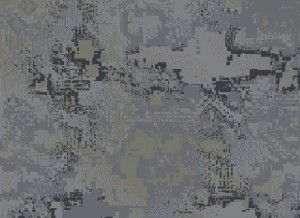
You have a line: the primary reason for effective camouflage is: what you can’t see you can’t hit. Is this part of your motivation?
It’s huge for these guys. If we can give them a few extra seconds then that’s what we want to do, that justifies the Army spending the money. The Air Force routinely spends over $100 million dollars for just one aircraft. One aircraft is equivalent to a large piece of this program and this pattern is for the whole Army. So when the discussion of wasted money comes up – what’s really a waste of money is putting ineffective camouflage on a soldier and sending them into combat. The one they have right now is so bad it doesn’t matter what gets put forward, it would be better, and they know that.
How did ineffective camouflage get there in the first place?
They don’t know. There was no proper research. It was someone at the top that just made a decision, “Looks good, looks like Starship Troopers.”
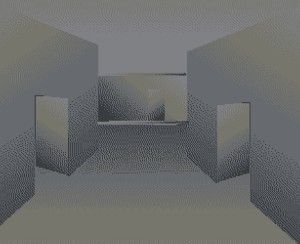
It’s been a couple of decades now since the end of the Cold War, a tense era but one with a greater sense of certainty. How do you deal with the shifting nature of security needs, with the situations that exist now?
The failure of UCP (Universal Camouflage Pattern, a modification of MARPAT) plays a huge role. Americans have now come to the conclusion that there is not one camouflage for all regions and environments. It doesn’t matter that MultiCam works well in Afghanistan, it doesn’t work well in Northern Europe or tropical regions. This old idea that you can design for the specific environment means that we are being asked to take this to the next level and are now being tasked to develop very environmentally specific patterns regarding the groups we design for. No longer are there just one or two choices for a green environment.
Even with camouflage, there still has to be an element of visual recognition, and it still needs to act as a uniform, to be identifiable.
We have to provide something that is distinctly different than the neighboring countries. When we designed for Jordan, we looked at what Israel used, what Lebanon used, what Syria used. Fractals are great because they are visual components of a mathematical equation, sometimes a very simple one, which can provide a unique pattern that looks different than the usual camouflage used by other countries.
They set the visual parameters?
Yes, in biology we see the same rules applying. Biological techniques served as reference points for the artists who designed camouflage in the past. But artists were looking at them as the end reference points; we were looking at them and saying evolutionary biology has limitations. In nature, you can have stripes or you can have spots. We’ve taken it a step further – we want to apply stripes and spots. It’s not about mimicry, it’s about getting something to look like it belongs in the background, but also in a lot of different backgrounds.
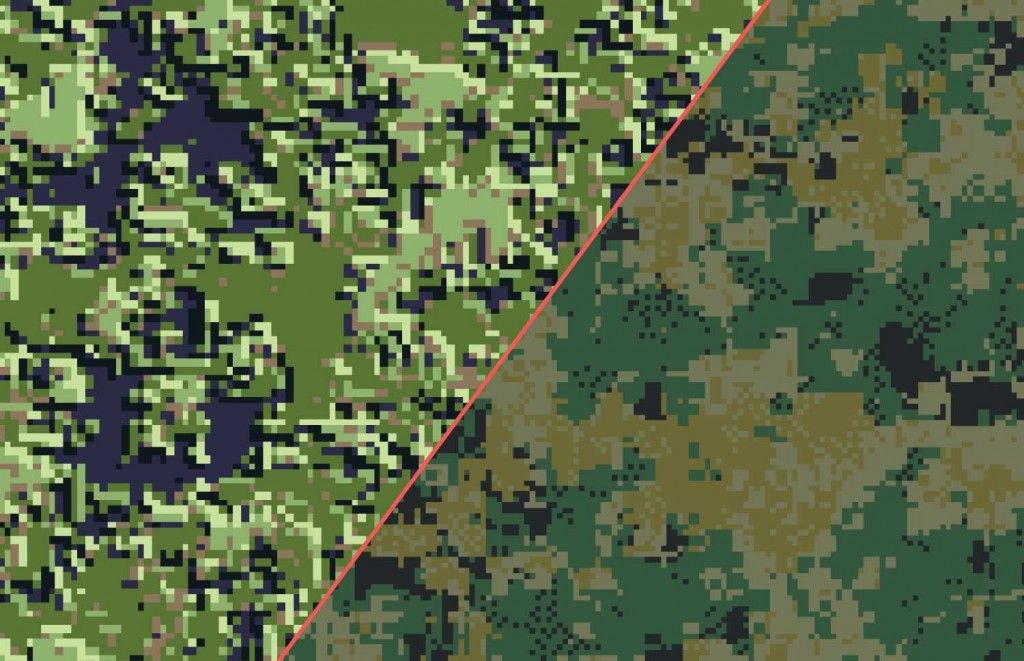
Too often design based on biomimicry actively looks for cases when nature and design correlate. The big thing in hunting camouflage used to be a photorealistic collage of twigs and leaves. But animal perception is different. Your approach didn’t rely on mimicry. Photorealistic camouflage looks impressive because it’s so detailed, but the intense marketing push leads me to believe it’s not effective.
The popularity of photorealistic camouflage has to do with its aesthetic quality. It makes people look like hunters because that’s what we’ve come to know hunters wear. W.L. GORE and Associates (makers of GoreTex) saw the market saturated with this stuff and they came to us with the idea of developing camouflage from the animal’s perspective. We had been working on hunting camouflage with other hunting apparel companies, but any new patterns renders old ones in their inventory obsolete, so they would drop our patterns even though they knew it was a better product. That’s how business works.
GORE didn’t have a pattern so they weren’t worried about making something obsolete. They wanted to do it differently; they wanted to do it better than it had been done before. They brought in the best animal vision expert, the top camouflage researcher and the top camouflage designer: Dr. Neitz, Dr. O’Neill, and myself.
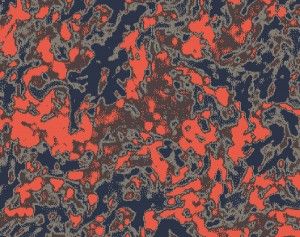
Is there a difference in how our visual perception works in an urban environment versus a natural one?
The same components come into play but on a different scale. In an urban setting, you’re dealing with big blank walls. How do you create camouflage for a blank wall? The Canadian military wanted camouflage for 10 square blocks in Toronto, Vancouver, and Montréal, which is where they might expect an incident. The colors within that environment are quite limited, so we had photos done from numerous buildings in each location, put them through an algorithm and had the computer tell us what the four common colors were. With the colors selected, we needed a pattern. There’s very little disruption on a flat wall, maybe some grout lines, maybe some texture, but not enough to make a huge difference.
How do you get the human shape to blend in with that background?
After designing about a hundred different patterns, I came up with the two that worked best, CUEPAT1 and CUEPAT2. They were very distinct from each other. CUEPAT1 has traditional detail but not enough detail in clumps so that the eye actually picks up on it.
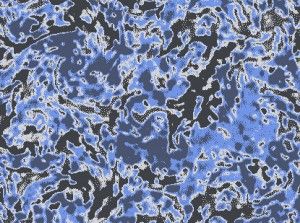
The clumps look like they make a grid system.
Yes, because you run into that grid system with the angles and corners of buildings. The angles are running at a complete 45 degrees. The dominant angles are the horizontals, and your subconscious will pick up on that. The verticals are minimal because that’s what we see when analyzing the urban data.
What was the other effective urban pattern?
With CUEPAT2, we created something very different – a depth pattern. The brain has trouble analyzing this pattern because it thinks it’s looking through it. It’s the same effect we’re trying to cause in the animals. The brain perceives depth where there is no real depth.
I saw the video where you were interviewed wearing this pattern, it looked so unique and interesting. I’m attracted to it because it is so odd.
The military didn’t want to move forward with it because it was not a typical camouflage.
If we thought CADPAT was odd at the time, this takes it to a whole other level.
The only reason they moved forward was that it continued to test better than any of the other urban patterns. Reviews from soldiers were mixed and again it may be that initial reaction soldiers have until they warm up to it. The first to see this pattern were the Canadian soldiers who asked themselves if this would be something they would wear, while a few months later in the States, they were saying things like “I would wear it, that looks good.”
Describe the cultural element in how visual disruption works.
It’s more psychological than cultural. The human brain perceives the same things regardless of culture. A Kalahari bushman will see the same thing as a businessman from Johannesburg. However, a country may select a pattern due to cultural perception, this was the case in Malaysia where they selected a very odd pattern of ours, HollowTex. I only later found out that the pattern’s geometry was similar to a configuration they use throughout their culture from curtains, to carpets, to clothing. Does this make it more effective for that culture? Perhaps, if you’re standing in front of those curtains.
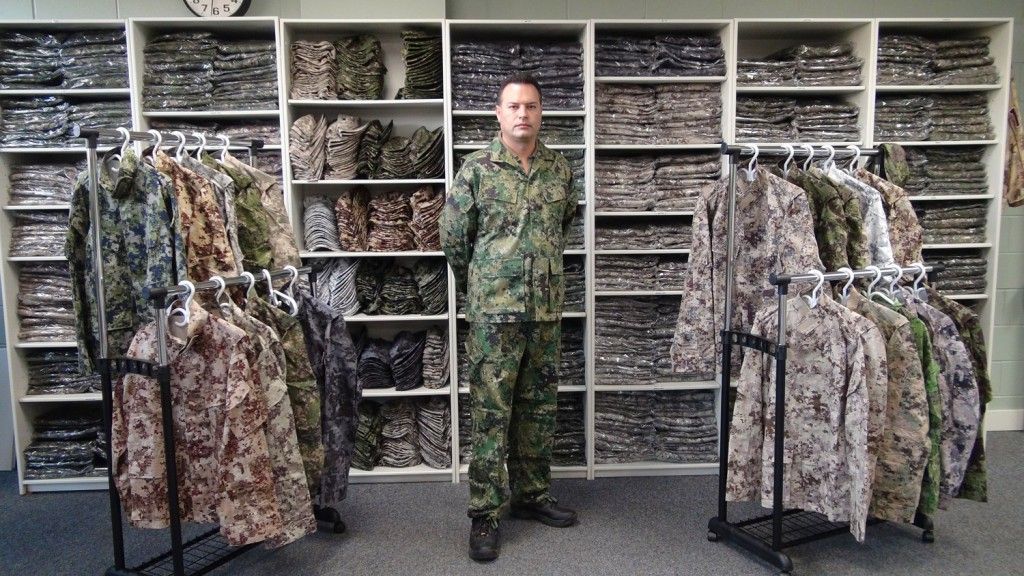
The new proposal you’ve submitted is another incarnation of camouflage as we know it: Quantum Stealth, true invisibility. How much of that is going to become the forefront of camouflage?
Quantum Stealth, the light bending technology, will likely be used for the top tier Special Forces. My assumption is it will be used until someone drops it in combat and the enemy reverse engineers it. Then they’ll give it to the whole Army.
Is energy going to be pushed solely into this technology or will there still be a need for printed patterns on fabric?
Printed fabrics will be a staple in our lifetime. Not everyone can afford the new technology. Perhaps the American and the Canadian militaries can, but not the majority of armed forces out there.
There’s also the BAE Systems tank with temperature changing hexagon pixels.
Those are only antithermal. Our Quantum Stealth works in visual and thermal spectrums. The ability to bend light is something that would probably already be in production if it wasn’t for that mindset that says, “That’s impossible, you can’t do that.” The idea of bending light is something we do all the time with fiber optic cables. The minute you tell someone that, they say, “Oh yeah, you’re right.” This is just a different way of doing what fiber optic cables do. It’s actually quite an easy system, which requires secrecy.
That’s how that whole system works – it would be pretty easy for something to slip out.
My grandfather always said you have to have a few aces in your hand. When we go into these meetings we’ve got something even better than Quantum Stealth and we only show them bits and pieces of it. What they see is a very raw form of the technology, what we’ve developed is not what we show them.
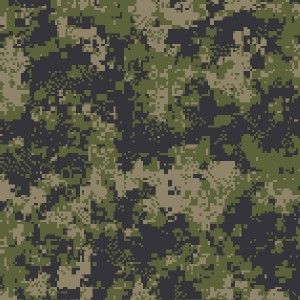
The carrot and stick act.
That’s how the world works. We’re not trying to blackmail anyone – we’re trying to protect our intellectual property. We want to develop it and make it the best that we can to provide the best security to the soldiers.
So it’s an adaptive process as well. Learning and trying to anticipate problems.
I can only anticipate so many problems. I eventually show someone, typically it’s recently retired Navy Seals, and get their thoughts. There are so many different types of objective tests that would take that guess work out. How did the brain perceive patterns? How long did it take the brain to find them in this photo? That’s the type of testing you want.
How long until light bending material is feasible to issue to the entire Army?
That depends on military command decisions; I can guess that they will initially use it just for Special Forces but someone who makes the decision may feel that there is a greater need to use it for the whole Army. I’ve had media contact me asking for pictures. For reasons of security, I can’t send pictures, but if you were to take a picture of the material within the environment, and one with the material not in the picture, they would look almost identical. And if there was someone standing behind Quantum Stealth you would not see anyone at all. That’s what the material does, it bends light right around, so you’re seeing what’s behind the target, not the target itself.
Is it an object or an actual fabric?
Both. Like the Japanese screen, like a hunting blind. But you can put it right on the clothing itself, and it’s just as effective. We’ve tested it out and it works.
If this got into the wrong hands, it seems like it would be a huge concern, even in the civilian world, it could wreak havoc.
You would think so! That’s how we perceive it, but that’s not the message we’re hearing from the people who make the decisions. If Hollywood took this and turned it into a movie there would be people chasing me in helicopters. It’s ridiculous that there is so little interest from the military for this at this stage, real life is red tape, politics, and budget limitations. It’s frustrating to have something that works so well that no one believes it, then when key people see it, they don’t know where to go with it. Invisibility cloaks don’t fall under any current category within the military.
That does sound frustrating – entering the realm of too good to be true.
A lot of what I know to be true and factual gets picked up by the media as something so far out there that it’s on the fringes. I don’t have the time to correct inaccurate stories each time I come up with something new and I don’t need to prove to the public that it works. I’m trying to prove that these technologies work within the confines of the security establishment, meaning I can’t discuss the real details outside of these groups and still no one on the inside seems to care at this point. Sometimes if it works too well people don’t want to believe it. I’ve run into that more often than not. Now that there is movement on the camouflage and recognition in the industry, some of those people are saying, “Maybe there is something to it, maybe he does know what he’s talking about.”
In my meetings with the military there is often an attitude of, “We can’t do that so you can’t do that.” But it doesn’t change the fact that we can, we have and we are able to repeat the experiments. This is not a onetime anomaly.
Credits
- Text: CONROY NACHTIGALL

